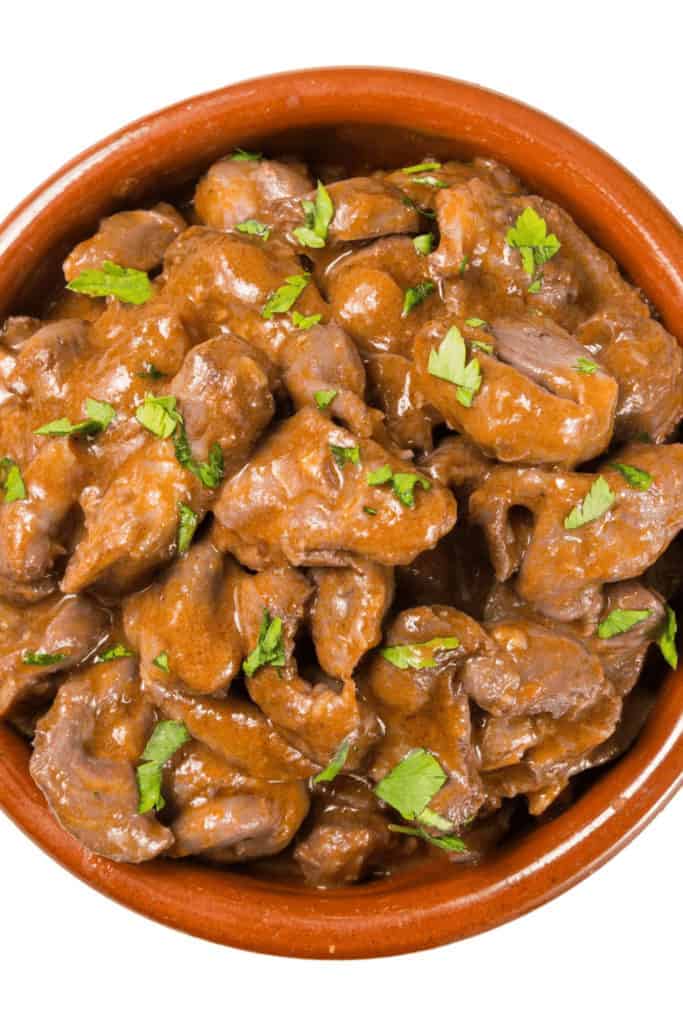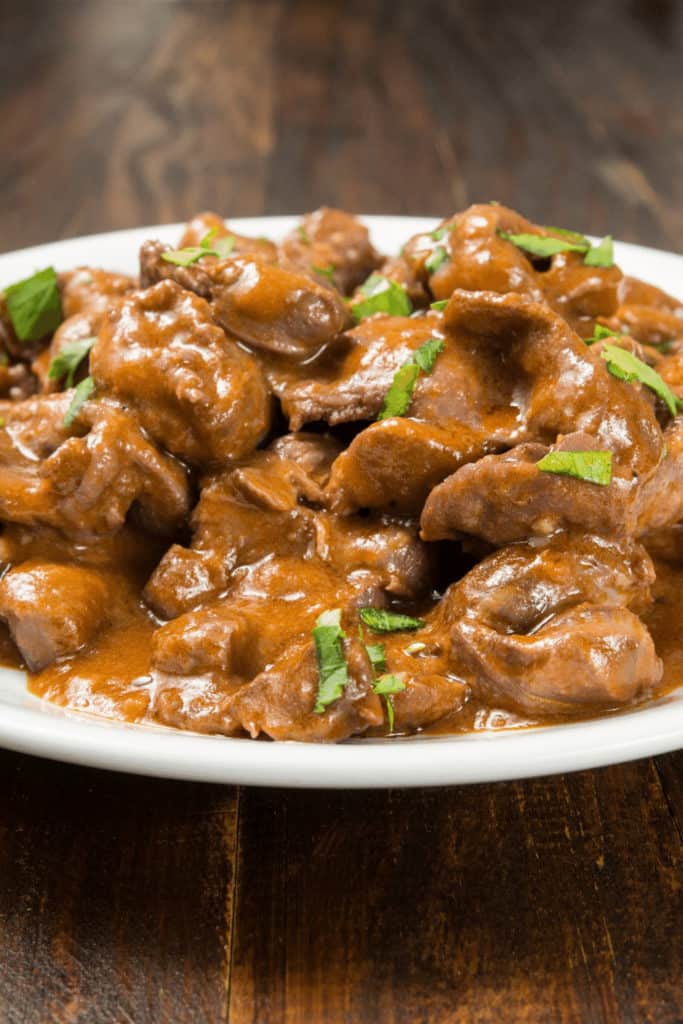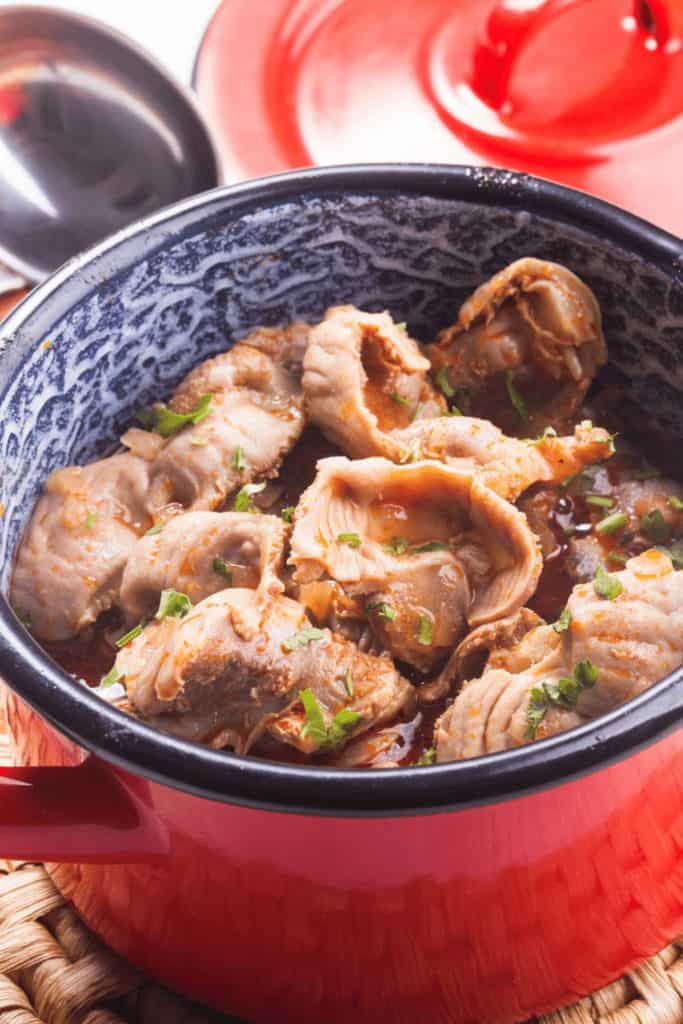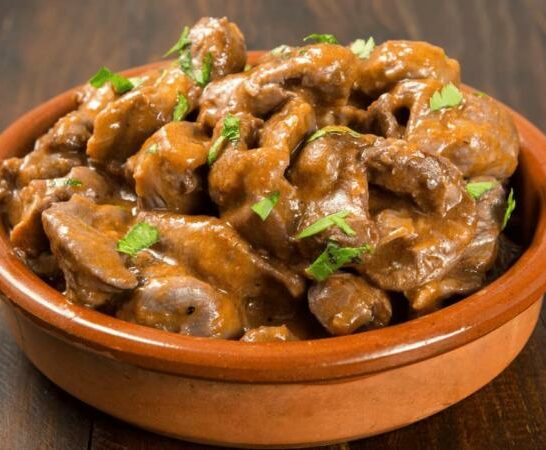Like any meat, chicken gizzards are done when their internal temperature reaches 165 degrees Fahrenheit, measured with a food thermometer.
However, how you get them to a safe temperature for eating varies.
Gizzards are tough and chewy if cooked wrong.
You won’t need to worry about getting them hot enough to kill bacteria if cooked properly.
Many recipes explain how to cook gizzards that come out tender. However, the gizzards will be only somewhat tender.
Because no matter how you cook a chicken gizzard, it will still be chewy.
If you want to learn to tell when a chicken gizzard is done, continue reading!
How do you know when chicken gizzards are done?
Chicken gizzards are done when their internal temperature reaches 165 degrees Fahrenheit. It takes time to cook a gizzard until it is fork-tender. Whether you sauté, boil, fry your gizzards, slow-cooking them first will ensure tenderness. The best-fried gizzards are cooked twice; many recipes have you boil them before flouring and frying.

What are chicken gizzards, anyway?
The gizzard is part of the chicken’s digestive system and works with the stomach to break food down to remove nutrients.
The gizzard is a muscle and uses pebbles, oyster shells, and grit, to help it grind grain, corn, and other fibrous foods into smaller pieces.
Once they are crushed, they can continue along the chicken’s digestive path.
Once a chicken’s food has been crushed in the gizzard, it passes into the small intestine. Here the nutrients are absorbed, and the waste is excreted.

As you see, the proximity of the gizzard to the other digestive organs means it is close to the bird’s waste.
Therefore, waste from the liver and intestines can get into the gizzards when chicken is processed.
Although you should be careful when cooking meat, organ meat, which gizzards are, should be handled especially carefully.
Before cooking them, rinse the gizzards well and cook them to the proper temperature.
Why should I be sure they are done?
Chickens carry salmonella, Campylobacter, and other viruses and bacteria.
These bacteria and others can be passed to you if your gizzards are not cooked to the proper temperature.
Don’t let that scare you, though.
All chickens are subject to these two bacteria and others, and as long as you cook your gizzards to a safe temperature, they will be fine.

There are times you will get a greenish-looking gizzard in a package. It is still edible but may have an off-putting flavor, so it is best to throw these away.
Also, gizzards can get a greenish hue if bile from the liver gets on them during processing.
Although it won’t harm you if you have cooked your gizzards to the proper temperature, the taste and color can be somewhat off-putting, so it is best to throw them away.
If you see green-colored gizzards in your grocer’s meat case, avoid them and get something else.
Are there many ways to cook gizzards?
Pressure cooking is the fastest method to make gizzards tender. People will often pressure-cook gizzards for a few minutes before frying them.
Sauteing gizzards with seasonings, onion, and garlic is also a method of making gizzards tender and flavorful.
After sautéing, the gizzards can be breaded and fried for the best chicken gizzards ever. A great southern fried chicken gizzard recipe can be found at Allrecipes.

No matter how you cook them, gizzards are high in B12 and low in fat.
You would most commonly fry gizzards, which is not the healthiest way to eat them but is the tastiest.
However, you can cook gizzards in many ways, and they are an inexpensive way to add protein to your diet.
An easy dish is to boil gizzards with seasonings and then add them to a pot of rice while cooking to make them even more tender.
The gizzards’ flavor and herbs meld into the rice, and cooking gizzards as long as it takes a pot of rice to cook will ensure they are done.
Be sure you start with fresh chicken gizzards.
They should be soft and have a glossy shine.

Bad gizzards are slimy or sticky; if you touch a gizzard and slime gets on your finger, toss the gizzards.
Frequently Asked Questions
Should I precook chicken gizzards before I fry them?
You should precook chicken gizzards unless you want to chew them for 15 minutes before you can swallow one.
Are chicken gizzards healthy?
Chicken gizzards are pure protein and vitamins; if you fry them, you add useless calories to your diet, but they sure are tasty.
Are chicken gizzards the same thing as giblets?
Chicken giblets can contain gizzards, but gizzards aren’t always giblets.
What are chicken giblets?
Chicken giblets include the fowl’s gizzard, heart, neck, and liver. Gizzards are often eaten alone or cooked with other giblet ingredients to make sauces
Conclusion
A bi-metallic or digital thermometer is the best way to ensure any meat is cooked at the proper temperature.
Likewise, a thermometer will help you ensure your food is at the appropriate temperature to be sure you are feeding your family safe food.
If you don’t have a thermometer and are going to fry your gizzards, boil or saute them first and then you will know they are done.
However, the safest way to handle any meat you cook is to take its temperature to ensure it is high enough to kill bacteria.
If you take this safety measure, the meat you cook will keep you healthy, not make you sick.

